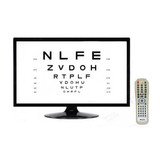Updated: Apr 22, 2024
Have you noticed how crazy expensive commercial real estate has become lately? The commercial real estate market has experienced an unprecedented surge in costs over the past few years, impacting the profitability and sustainability of many small businesses, including optometry. Let's dive into why these costs are skyrocketing and how we can adapt to keep our businesses thriving.
Theories behind the Rising Costs of Commercial Real Estate:
High Demand and Limited Supply: One of the primary reasons for the increasing costs of commercial real estate is the imbalance between high demand and limited supply. With cities growing faster than ever, there's a massive demand for commercial spaces. The problem is, there aren't enough suitable places to meet this demand. This scarcity of available spaces in prime locations has led to intense competition among businesses, driving up prices.
Urbanization and Gentrification: The process of urbanization and gentrification has had a significant impact on commercial real estate prices. As more people flock to urban areas in search of employment opportunities and convenient lifestyles, the demand for commercial spaces has surged. Plus, the gentrification of rundown neighborhoods is pushing up property values, making real estate even pricier.
Economic Factors and Inflation: Economic factors, including inflation and interest rates, play a crucial role in the rising costs of commercial real estate. When the economy is strong, businesses are more willing to invest in expanding their operations. This increased demand drives up prices. Furthermore, inflation erodes the purchasing power of money, making everything from construction materials to labor more expensive, which adds to the overall cost of real estate.
Adapting to the Rising Costs:
In the face of escalating commercial real estate costs, we can use different strategies to adapt and navigate this challenging landscape:
Explore Shared Spaces: Optometrists can consider sharing commercial spaces with other healthcare professionals or complementary businesses. This arrangement allows for cost-sharing and can significantly reduce the financial burden of leasing or purchasing a dedicated space. Although commercial lease partnerships may not be everyone's first choice, I believe it will become more necessary as costs continue to rise.
Embrace Telehealth: Advancements in technology have opened up new opportunities for optometrists to expand their services through telehealth. By offering virtual consultations, remote monitoring, and digital eyewear prescriptions, optometrists can reduce the need for large physical spaces and the associated costs. Please note: Telehealth is not legal for optometrists in every state. Check with your state board before implementing telehealth in your practice.
Optimize Space Utilization: Optometrists should focus on optimizing their physical space. By utilizing space efficiently and adopting open-concept designs, they can reduce the overall square footage required, thereby decreasing the associated costs. Look into equipment that can do multiple tests in a smaller footprint, or consider handheld equipment, to eliminate the need for a separate pretesting room altogether.
4. Cutting Overhead: Optometrists forced to pay high rent prices may need to consider cutting practice costs elsewhere. This may involve reevaluating and streamlining office processes, reducing staffing levels, and implementing other cost-saving measures. Need help? Take a look at our Cost Savings Analysis service.
In conclusion, the rising costs of commercial real estate present a real challenge for today's practice owners. By getting creative with smaller spaces and embracing new technologies, we can keep our practices thriving in this changing economy. Check out my other posts, including this one on maximizing reimbursements using embedded vision plans.
The products recommended on this page are from verified ophthalmic equipment vendors. Although you may find a lower price advertised by other suppliers, I can not vouch for their quality or authenticity.
I may receive a commission from the seller on the products featured on this post. That being said, my opinions are my own and are not influenced by any potential income.



























